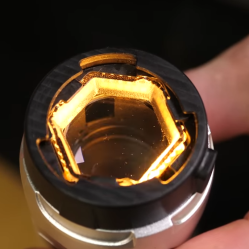President Trump notched a partial victory last week in a war that Republicans have been waging for more than a decade: Planned Parenthood will no longer receive one important source of federal funding for birth control and other reproductive health services.
Planned Parenthood faced a difficult choice. To comply with a new Trump administration rule for the Title X grant program, which bars funding recipients from providing or referring abortions, the organization would have to drastically reform the way it operated. It could either build separate facilities for its abortion procedures — which would be a big financial burden — or give up performing abortions altogether, in the hope of continuing to receive money for low-income women’s reproductive health services. In both situations, Planned Parenthood would also be prohibited from referring patients to an abortion provider. In the end, the organization chose a third path: It walked away from up to $60 million annually in federal funds.
This decision has already resulted in higher fees for women in some states. And it carries some political risks for Planned Parenthood as well, according to Mary Ziegler, a law professor at Florida State University who studies the politics of reproductive health. “There’s a narrative that Planned Parenthood has been prioritizing abortion rights advocacy over other forms of care for women, and there’s a sense in which this choice could reinforce that,” she said.
Whether this will be a win for the Trump administration and Republicans isn’t entirely clear, either. For one thing, the rule is still being challenged in court. But restricting funding for organizations that provide both abortions and reproductive health services also may not be that popular — even among a significant share of Republicans. One recent poll from the Kaiser Family Foundation shows that a majority of Americans, including 48 percent of Republicans, don’t have a problem with abortion providers receiving federal funding for contraception and other services. And some experts told me that the Trump administration is wading into risky territory, since contraception just isn’t as controversial as abortion.
On the other hand, Republicans really don’t like Planned Parenthood. According to a 2018 Gallup poll, 63 percent of Republicans have an unfavorable view of the organization — which puts them out of step with independents and Democrats, who view Planned Parenthood much more favorably. So even though some Republicans may be leery about yanking family planning funding from abortion providers in a general sense, they are much more unified on the specific question of defunding Planned Parenthood: According to that Kaiser Family Foundation poll, 57 percent of Republicans said state payments to Planned Parenthood should stop. “A lot of conservatives won’t see this as the Trump administration cutting off birth control access,” said Daniel Williams, a history professor at the University of West Georgia who studies the pro-life movement. “It’s about removing federal funding for a group that’s been vilified on the right for many, many years.”
In general, Ziegler said, taking actions that could restrict birth control access — which the Trump administration has also sought to do by trying to grant religious employers broader exemptions to the Affordable Care Act’s contraceptive mandate — is riskier than going after abortion. “Contraception is a trickier issue for the right to navigate because a lot of Americans in the middle are in favor of contraception and they like programs like Title X,” Ziegler said.
Most Republicans in the Kaiser Family Foundation poll were opposed to giving funding to organizations that don’t offer contraception or only provide contraception on natural family planning methods, which is a form of birth control that doesn’t involve drugs or devices, but is typically less effective than other common contraceptive methods. That’s important because under the new rule, organizations that receive Title X dollars are also no longer required to provide pregnancy options counseling that includes information about abortion, which means that faith-based or other anti-abortion groups that don’t provide a full range of contraceptive options are newly eligible for federal funding. Although changes in Title X funding could affect a significant number of women, most won’t be directly affected. “The vast majority of people who use Title X are low-income, minority women,” said Rebecca Kreitzer, a public policy professor at the University of North Carolina. “That’s not the experience most people have, and it’s also a group that isn’t very mobilized politically.”
So some Republicans might be uncomfortable with the Trump administration’s move, particularly if it starts having an impact on reproductive health services more broadly. A Quinnipiac poll conducted in 2017 found, for example, that Republicans’ support for defunding Planned Parenthood fell when respondents were told the money wouldn’t be used for abortion. That complexity may not be enough to shift the political dynamics of this specific battle — but it’s an important reminder that birth control is a more complicated political issue for Republicans than abortion.




